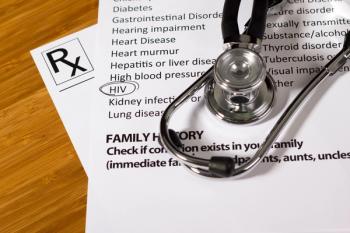
- Drug Topics March 2018
- Volume 162
- Issue 3
How to Manage Medication Risks
Managing the overall risk of medication therapy is more effective than simply managing drug-drug interactions.
A pharmacist-run healthcare company is showing that medication risk management (MRM), in which pharmacists thoroughly review complex medication regimens for safety) is more effective than medication therapy management (MTM), where medication is reviewed for drug-drug interactions.
So much better, that the company,
“In closed healthcare systems under PACE (Program of All-Inclusive Care for the Elderly), we get better than 90% prescriber uptake on our recommendations to reduce hospitalization from adverse drug events [ADEs]. Those recommendations are reducing hospitalizations anywhere from 25% to 50%,” says Calvin Knowlton, PhD, CEO and founder of Tabula Rasa. “Those are the results that prompted CMS to select us as one of five demonstration projections nationwide.”
Related article:
First-year results from the CMS demo will not be available until later this year, Knowlton says. CMS is seeking a 2% reduction in ADE-related hospitalizations.
MTM versus MRM
MTM can boost adherence, Knowlton says, but is of limited value in terms of reducing ADEs. The concept of MTM was developed during the Reagan administration and has not changed in the past four decades, he says. The MTM-based drug interaction screens typically used in healthcare systems are limited to viewing one drug versus another drug. That may be adequate for simple regimens, but the typical Medicare patient takes more than 10 medications daily, he noted.
Individuals who take seven or more medications daily have an 85% risk of an ADE. Avoidable ADEs, defined as interactions that can be identified by MRM, cost the nation more than $200 billion annually, he says.
“Where MTM is limited to a one-to-one approach, we reimagined drug review as a bicycle wheel with the drugs around the outside with spokes coming into the hub,” he says, referring to MRM. “We said we should be able to build a hub to analyze those interactions using pharmacokinetics, pharmacodynamics, and pharmacogenomics. The goal is give the user relevant information about that specific combination of seven or eight or 10 meds in that specific patient.”
The MRM review indicates:
- What drug interactions are likely to come up in a particular patient
- What the biggest risk factors are
- The first steps to take to reduce the risk of an ADE
Essentially, the program gives a snapshot of medication-related risks with bullseyes around the most critical ones. That provides a picture of the most appropriate interventions, whether it is something as simple as changing the time of administration for a drug, or more complex adjustments such as substitutions or deprescribing one or more agents, says Knowlton.
Related article:
Once the most important risk factors are addressed, the program runs again with the new regimen and identifies any new risk factors. The concept is similar to continuous quality improvement: analyze the situation, make changes, reanalyze, make more changes, and repeat, he says.
Future Plans
The pilot is expanding to community pharmacies in the Northern Plains states in the second quarter, Knowlton says. Community pharmacists there will starting using the system with patients in the second quarter. CMS has approved payments to review regimens and counsel patients for 45 minutes up to three times in six months.
The next step is a smart phone app linked to the pharmacy that allows a patient or caregiver to screen potential OTC or prescription medications.
“We are trying to equip pharmacists, prescribers, and patients with current information that can help them in real world practice,” Knowlton says. “This is 21st century multidrug simultaneous risk analysis at work.”
Articles in this issue
over 7 years ago
Pharmacists Help Drive Down Infection Ratesalmost 8 years ago
Hospital Pharmacists Struggle with Sterile Water for Injection Shortagealmost 8 years ago
Four Ways Pharmacists Are Fighting Opioid Abusealmost 8 years ago
Small Doses: March 2018 Editionalmost 8 years ago
Two Crucial Skills Pharmacists Will Need to Succeed in the Futurealmost 8 years ago
First in Class Drug for Glaucoma: What Pharmacists Need to KnowNewsletter
Pharmacy practice is always changing. Stay ahead of the curve with the Drug Topics newsletter and get the latest drug information, industry trends, and patient care tips.

















































































































